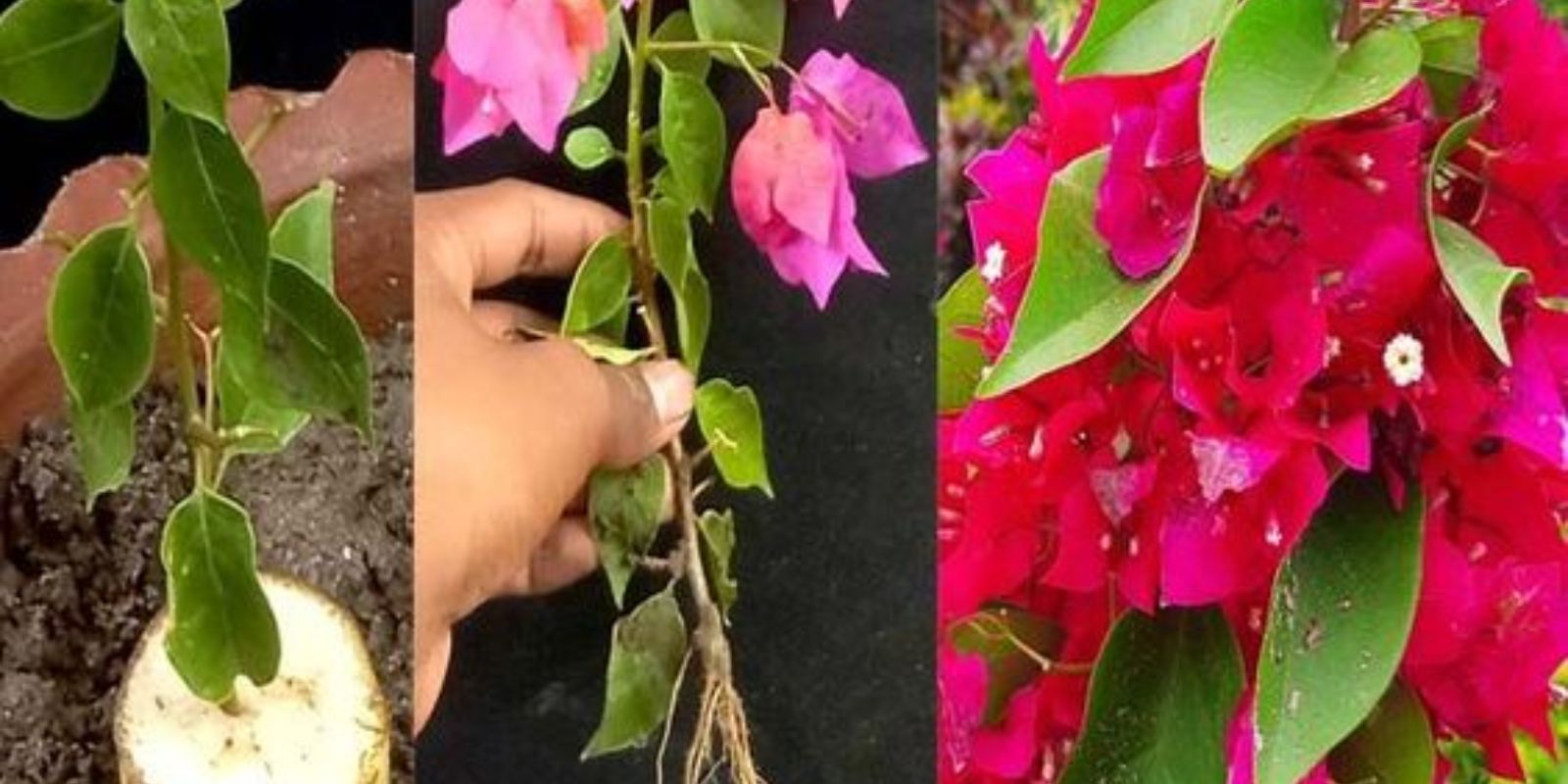Introduction:
Bougainvilleas are celebrated for their vibrant and colorful bracts, which can brighten up any garden. For those looking to push the boundaries of traditional gardening and create a truly spectacular display, grafting bougainvillea using bananas offers an innovative and exciting method. This technique not only enhances the visual appeal of your bougainvillea but also introduces an element of creativity into your gardening routine. In this article, we’ll explore the fascinating process of grafting bougainvillea with bananas, step-by-step, and provide tips for ensuring your grafting project is a success.
Why Use Bananas for Grafting?
Grafting is a technique used to join two plant parts so they grow as one, and it’s often used to propagate plants or combine desirable traits. The banana method is an intriguing variation that leverages the banana’s natural properties:
- Nutrient Richness: Bananas contain essential nutrients and sugars that can help support the growth and healing process of the grafted plant.
- Ease of Use: The banana peel is pliable and easy to work with, making it an accessible medium for beginners and experienced gardeners alike.
- Unique Results: This method can result in multi-colored bougainvilleas, offering a visually stunning display with minimal effort.
Steps for Grafting Bougainvillea Using Bananas:
- Prepare the Grafting Materials:
- Choose Bougainvillea Cuttings: Select healthy, mature bougainvillea cuttings from a plant. The cuttings should be free of disease and have several healthy leaves.
- Obtain Bananas: Use ripe bananas for this process. The peel will be used to facilitate the grafting. Make sure the bananas are firm and not overly ripe to ensure they hold their shape.
- Clean Your Tools: Sterilize your grafting knife or scissors to prevent the spread of diseases. Clean tools ensure a smooth and successful grafting process.
- Prepare the Cuttings:
- Cut the Bougainvillea Stem: Make a clean, diagonal cut on the bougainvillea stem. The cut should be around 2-4 inches long, depending on the size of the cutting.
- Prepare the Banana Peel: Slice the banana peel into thin strips that are slightly longer than the bougainvillea cutting. The peel should be fresh and pliable to facilitate wrapping and binding.
- Graft the Cuttings:
- Align the Surfaces: Position the cut surface of the bougainvillea stem against the banana peel. The goal is to ensure that the cambium layers (the growing tissue) of both the cutting and the peel are in contact.
- Secure the Graft: Use grafting tape or another binding material to wrap the bougainvillea cutting and banana peel together. Make sure the wrap is snug but not too tight, as it needs to allow for some growth and expansion.
- Wrap and Seal:
- Cover the Graft Site: After securing the graft, wrap the entire grafting site with tape or grafting film to protect it from moisture and external elements. This helps prevent fungal infections and ensures a stable environment for the grafting process.
- Add Support: If necessary, use stakes or small supports to keep the graft in an upright position while it establishes.
- Monitor and Care:
- Provide Ideal Conditions: Place the grafted plant in a warm, shaded area with indirect sunlight. Bougainvilleas thrive in warm conditions, so maintaining a consistent temperature and humidity level is crucial.
- Water Regularly: Keep the soil consistently moist but not waterlogged. Regular watering helps the graft establish and encourages healthy growth.
- Observe Growth: Check the graft site regularly for signs of new growth. It may take several weeks for the graft to take, so be patient and attentive to any changes in the plant.
Additional Tips for Successful Grafting:
- Timing: Perform grafting during the plant’s active growing season for the best results. Spring or early summer is typically ideal for bougainvillea.
- Pruning: Prune the bougainvillea before grafting to remove any excess growth that might interfere with the grafting process. This also encourages new growth.
- Avoid Stress: Minimize environmental stressors such as sudden temperature changes or strong winds, which can negatively impact the graft.
- Check for Pests: Regularly inspect the grafted plant for pests and diseases. Early detection and treatment can prevent complications.
Creative Uses for Grafted Bougainvillea:
Grafting bougainvillea with bananas not only creates beautiful, multi-colored blooms but also opens up possibilities for unique garden designs:
- Garden Arches: Use grafted bougainvilleas to create colorful garden arches or trellises that add vertical interest and vibrancy to your garden space.
- Hanging Baskets: Plant grafted bougainvilleas in hanging baskets for a cascading display of colors that can enhance patios or balconies.
- Mixed Plant Displays: Combine grafted bougainvilleas with other flowering plants in mixed containers or garden beds for a dynamic and visually engaging landscape.
Common Challenges and Troubleshooting:
- Graft Failure: If the graft does not take, it could be due to improper alignment, inadequate care, or environmental factors. Ensure the grafting surfaces are in good contact and that you provide optimal growing conditions.
- Disease: Keep an eye out for signs of disease, such as wilting or discolored leaves. Treat any issues promptly with appropriate fungicides or plant treatments.
Conclusion:
Grafting bougainvillea using bananas is a creative and rewarding method that can transform your garden with stunning, multi-colored blooms. By following the outlined steps and incorporating additional care tips, you can enjoy the beauty of a uniquely grafted bougainvillea that adds a touch of innovation to your gardening efforts. Embrace this exciting technique and watch as your garden flourishes with vibrant colors and creativity. Ready to experiment with this unique grafting method? Give it a try and create a breathtaking display of bougainvillea in your own backyard! 🌺🍌🌿

